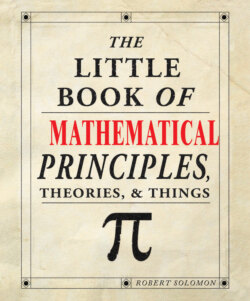Читать книгу The Little Book of Mathematical Principles, Theories & Things - Robert Solomon - Страница 19
На сайте Литреса книга снята с продажи.
5th century BC Greece Trisecting the Angle
ОглавлениеThe problem of dividing an angle into three equal parts.
_______________
We can bisect an angle, but can we trisect it?
Greek mathematicians set many problems. This and the next two topics contain the three most important problems, having had a great influence on the progress of Greek mathematics and, indeed, on all mathematics.
All three problems are geometrical. They involve performing a geometrical construction. For Greek mathematicians, constructions had to be exact, using straight edge and compasses only. You were not allowed to use a ruler to measure distances nor a protractor to measure angles.
Suppose we are given an angle. The problem is to trisect it or, in other words, to cut it into three equal angles. Can this be done with straight edge and compasses only? You are not meant to measure the angle with a protractor and then divide by three.
To bisect it (or to cut it into two equal parts) is straightforward. To bisect ∠ABC:
Put the point of the compasses on B. Draw an arc cutting the lines at D and E. Put the point of the compasses at D, draw an arc. Put the point of the compasses at E, draw an arc. These arcs meet at F. FB bisects the angle.
Is there a similar construction to trisect the angle? The Greeks found many clever methods but they all required more instruments than the basic straight edge and compasses.
This matter has been a very popular problem among amateur mathematicians and is possibly one for which the greatest number of false proofs have been proposed.
